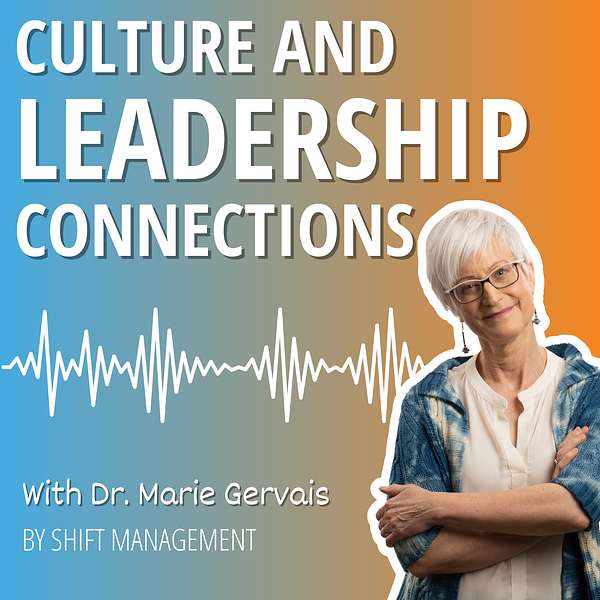
Culture and Leadership Connections Podcast
Culture and Leadership Connections Podcast: where culture, communication, and context meet at work. Discover what cultural influences have formed the careers of noteworthy leaders in a variety of professions, by exploring the groups that shaped who they are today. Learn about the collective context and experiences that affect their worldview, leadership style, workplace communication and behaviour.
Culture and Leadership Connections Podcast
Insights: Anxiety is Not an Emotion
Anxiety is Not an Emotion
Did you know that anxiety is not an emotion? You may think you "feel" anxious, but in reality, you're sensing anxiety. Anxiety is a physiological reaction from the "fight or flight" function of the vagus nerve. It triggers the adrenals to release cortisol and adrenaline into your nervous system, setting off an alert to potential danger. You feel it in your solar plexus above your kidneys.
Anxiety's hormones aren’t usually signs of real danger, making anxiety "homeless." It is a moving target in search of a home, but always gets kicked out due to its bad behavior. Anxiety can never be satisfied, making it a close partner to perfectionism. Never happy, never good enough, never complete. Anxiety, perfectionism, criticism, and paranoia cause repeating neurological thought loops that entrench fear (false expectations appearing real). This leads to catastrophizing (seeing disaster around every corner) or magical thinking (belief that unrelated events are connected despite no evidence). These thought patterns result from anxiety, constantly searching for a place to reside, but no one wants to let them in permanently due to their disruptive nature.
Emotions, on the other hand, are our friends. Whether pleasant or unpleasant, they ask to be acknowledged and felt. When we acknowledge our emotions, they transmit messages necessary for both surviving and thriving. However, we often fail to acknowledge and accept our emotions, causing them to return and eventually get stuck in the body. This can create stiffness, pain, and inflammation in the muscles, organs, or entire body areas.
But there’s hope! There are practical things you can do, or rather undo, to create and sustain feelings of calm, peace, and confidence, which dissolve anxiety.
Three Anxiety-Calming Practices:
1. Cognitive Practice: Move Your To-Do List to a Success List
- Start with a sticky note pile and a pen or pencil.
- Set a timer for two minutes and write the first "to do" thing that comes to mind on a sticky note, then rip it off and set it aside. Continue until the timer goes off.
- Categorize these tasks into piles and put the top priority for each pile on top.
- Create a "success list" of no more than three items.
- When feeling overwhelmed, do this activity to calm your mind and create a sense of order.
2. Breathing and Awareness
- Become consciously aware of your breathing and whatever feeling you are experiencing in the moment.
- Make this a practice whenever you notice sensations of anxiety or obsessive thinking.
- This will calm your nervous system and replace danger signals with signals of well-being.
- In a real dangerous situation, this practice will help you stay clear-headed and calm.
3. Acceptance
- Tell yourself, “I accept that I am feeling this right now.”
- Acceptance is the thriving part of your nervous system that allows feelings of joy and brings inspiration.
- Accepting one feeling in the moment opens the horizon to other good things, helping you wave goodbye to anxiety.
In conclusion, anxiety is not an emotion, but instead a physiological response that you can calm. Using the aforementioned anxiety-calming practices will bring relief and a sense of freedom.
Thanks to Marie-Helene Pelletier for her insights on this topic from her book, The Resilience Plan.
For professional support, you can email me at marie@shiftworkplace.com to schedule a time to connect and talk.
